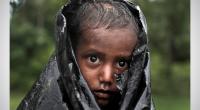 Bangladesh is going through a planned transformation with speedy implementation of mega projects leading a sharp rise of government expenditure.
Bangladesh is going through a planned transformation with speedy implementation of mega projects leading a sharp rise of government expenditure.
The expenditure has positive impact on the overall economy with a rise in the per capita income and it’s expected that the economy will grow by 7.65 per cent by the end of the fiscal, surpassing the government’s projection.
Other than the mega ones, small projects like paving and repairing roads, bridges and culverts in rural area and investing in social sectors, like educations and health have changed the socio-economic condition.
Dhaka-Chattagram (Chittagong) four-lane highway – the economic life line of the country – and Dhaka-Mymensingh four-lane highway have already been completed while implementation of other mega projects, like the Padma Bridge and Metro Rail are going on in a full swing.
The government is planning to upgrade all the highways to four-lane in phases while it has started the process to build another international airport.
Flyovers on Dhaka-Chattagram and Dhaka-Sylhet highways and several flyovers inside Dhaka and Chattagram have changed the landscape of the cities. The 80-kilometre Cox’s Bazar –
Teknaf marine drive has turned into one of the main tourist attractions in the country.
The government is also Implementing the first-track projects that include the Padma bridge, metro rail, Paira seaport, Rooppur nuclear power plant, Matarbari coal-based power plant, Rampal coal-based power plant, LNG terminal, Padma Bridge rail link and Dohazari-Cox's Bazar-Gundum rail line.
Bangladesh now has its own satellite in orbit and people in remote area have access to mobile phone with internet facility. Now, people can send money easily and quickly all over the country through mobile banking.
The country has fulfilled the eligibility requirements to graduate from ‘Least Developed Country’ to ‘Developing Country’ status and can seek official approval for the advance.
Graduation depends upon meeting eligibility criteria scores in Gross National Income (GNI) per capita, the Human Assets Index (HAI) and the Economic Vulnerability (EVI) Index and other country-specific information.
The scores required for graduation from the LDC category are a per capita GNI of $1,230 or above, an HAI of 66 or above and an EVI of 32 or below, according to the standard set by Ecosoc, the UN’s Economic and Social Council.
Bangladesh’s current GNI per capita is $1,610, according to the Bangladesh Bureau of Statistics or BBS.
However, according to the UN, Bangladesh’s GNI per capita is $1,274.
The UN said in a 2018 report Bangladesh’s HAI is 73.2 and its EVI 25.2.
The government is hopeful that if Bangladesh remains on track, Bangladesh will have no problems graduating in 2024.
“Bangladesh has taken up the herculean task of taking the country forward despite facing obstacles,” economist Atiur Rahman said.
The government has been playing a facilitating role to promote the private sector and the policy has paid off, according to the former central bank governor.
“We started with zero reserve but now the Bangladesh Bank has $32 billion reserve. The meager $8 billion economy in the early 70s has grown over the years into $270 billion. We are the second biggest ready-made garment exporter in the world. The foreign buyers are now certifying that the safety and security are ensured in the RMG sector here,” he told Bangla Tribune.
The poverty rate has dropped to 22 per cent from 80 per cent and all these achievements have turned Bangladesh a ‘role model for development’, he said.
The former Bangladesh Bank chief believes Bangladesh’s socio-economic condition will significantly improve once the mega infrastructure projects are completed.
Padma multipurpose bridge
About 60 percent work of the much-talked Padma bridge has completed, according to the government’s Economic Relations Division.
Its recent report, with updates until March, says the expenditure stood at Tk 151 billion out of the estimated cost of Tk 287 billion.
The third span of the 6.15-kilometre bridge was installed in March and the fourth span went up on Sunday (May 13). A total of 41 spans would be installed on the 42 pillars of the bridge.
The project is scheduled to be completed by December this year.
Shafiqul Islam, Padma bridge project director, said, “We are working day in day out to fisnish the work by the scheduled time.”
Metro rail project
It is one of the priority projects of the government to reduce traffic congestion in Dhaka city.
The estimated cost of the project is about Tk 220 billion and until March the government has spent about Tk 30 billion, finishing about 19 per cent of the work.
The government, in the first phase, wants to start Uttara to Agargaon metrorail service by next year and in the second phase, from Agargaon to Motijheel which is expected to be completed by 2024.
Out of the total expenditure, the government is providing over Tk 53 billion while Japan is providing over Tk 166 billion in loans.
Rooppur nuclear power plant
The main construction work of the power plant is progressing with an aim to complete the whole work by 2024.
Russia is providing 90 per cent loans to set up the 2,400 megawatt plant in Pabna’s Iswardi while the rest is borne by Bangladesh.
Paira seaport
The government is setting up the third seaport in Patuakhali on an area of 7,000 acres with an aim to finish the work by 2024.
It is expected that when the seaport becomes operational, the entire region would become a modern industrial region in the country.
Matarbari coal-fired power plant
About 18 per cent work of the 1200-megawatt project has already been completed.
The estimated cost of the project is Tk 363 billion, in which Japan would provide Tk 299 billion in soft loans. However, experts say that the cost might go up to as high as Tk 500 billion.
So far, Tk 50 billion have already been spent for the project and the scheduled time to finish the project is 2023, when it would start supplying electricity to the national grid.
Rampal thermal plant
Rampal thermal plant, a joint venture between Bangladesh and India, is going to be set up on 1,834 acres of land at Rampal in Bagerhat district.
The estimated cost to build 1320-megawatt plant is Tk 150 billion, of which Bangladesh and India would provide 15 per cent equity each while the remaining 70 percent would be sourced as soft loans.
The project is supposed to be completed by next year, but until March, only 8 per cent of the work finished.
LNG terminal
Construction of the floating LNG (liquefied natural gas) terminal with a daily capacity of 5 million cubic feet gas is nearly completed in the island Upazila Moheshkhali in Cox’s Bazar.
A 91-kiliometre gas pipeline between Moheshkhali and Chattagram has been completed, which cost Tk 9.82 billion.
Gas Transmission Company of Bangladesh (GTCL) is expects to start supplying LNG to the national grid in May.
Padma Bridge rail track
Rail links on the Padma Bridge was one of 27 projects inked during Chinese President Xi Jingping’s 2016 visit. The 172-kiliometre rail link will connect Dhaka with the southwestern districts of Fadripur, Narail and Jashore.
The estimated cost of the project is Tk 350 billion, of which China will lend Tk 250 billion while Bangladesh will bear the rest.
Chattagram-Cox's Bazar-Gundum rail track
The 129.59 kilometre railway track is expected to boom tourism in Cox’ Bazar, contributes more to GDP.
The estimated cost is Tk 180 billion. The Asian Development Bank has agreed to provide Tk 131 billion for the project, which is expected to be complete by 2022.


